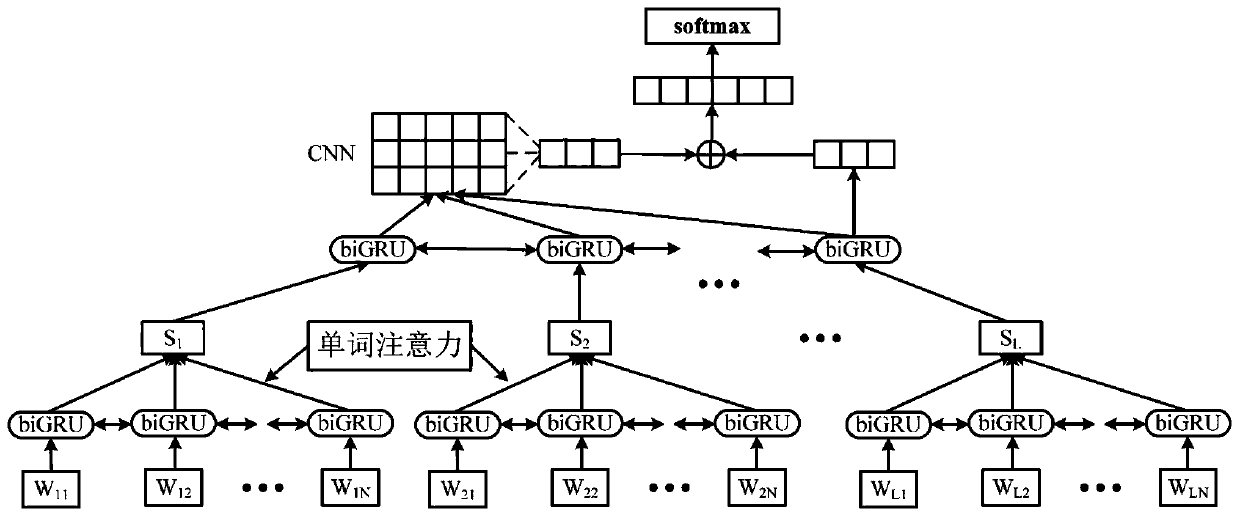Document-level sentiment classification method based on dynamic word vectors and hierarchical neural network
A neural network and emotion classification technology, applied in biological neural network models, text database clustering/classification, neural architecture, etc., can solve problems such as feature information loss
- Summary
- Abstract
- Description
- Claims
- Application Information
AI Technical Summary
Problems solved by technology
Method used
Image
Examples
Embodiment
[0080] A document-level sentiment classification method based on dynamic word vectors and hierarchical neural networks, such as figure 1 shown, including the following steps:
[0081] S1. Obtain high-quality dynamic word vectors by constructing and training a two-way language model; high-quality dynamic word vectors are word vectors related to the semantics of the sentence where the word is located; including the following steps:
[0082] S1.1. Construct and train a bidirectional language model;
[0083] like figure 2 As shown, the two-way language model is a two-layer language model, and each layer is composed of a two-way long-term short-term memory neural network biLSTM. The language model uses sentences as input units, and the sentences are input to the first-layer language model at the input layer. In order to calculate the probability of the sentence appearing, and the probability of the sentence is obtained by calculating the cumulative multiplication of the probabil...
PUM
 Login to View More
Login to View More Abstract
Description
Claims
Application Information
 Login to View More
Login to View More - R&D
- Intellectual Property
- Life Sciences
- Materials
- Tech Scout
- Unparalleled Data Quality
- Higher Quality Content
- 60% Fewer Hallucinations
Browse by: Latest US Patents, China's latest patents, Technical Efficacy Thesaurus, Application Domain, Technology Topic, Popular Technical Reports.
© 2025 PatSnap. All rights reserved.Legal|Privacy policy|Modern Slavery Act Transparency Statement|Sitemap|About US| Contact US: help@patsnap.com



